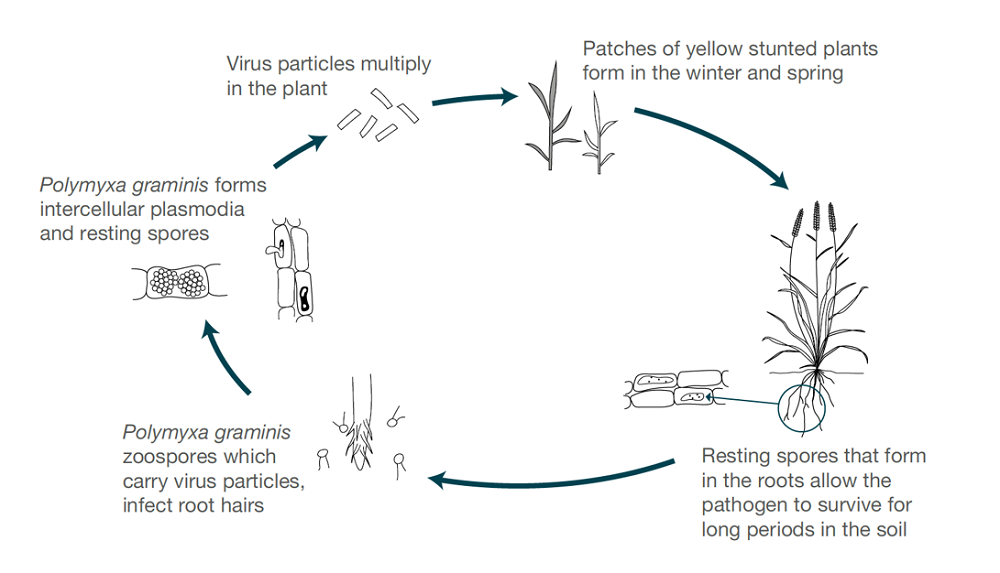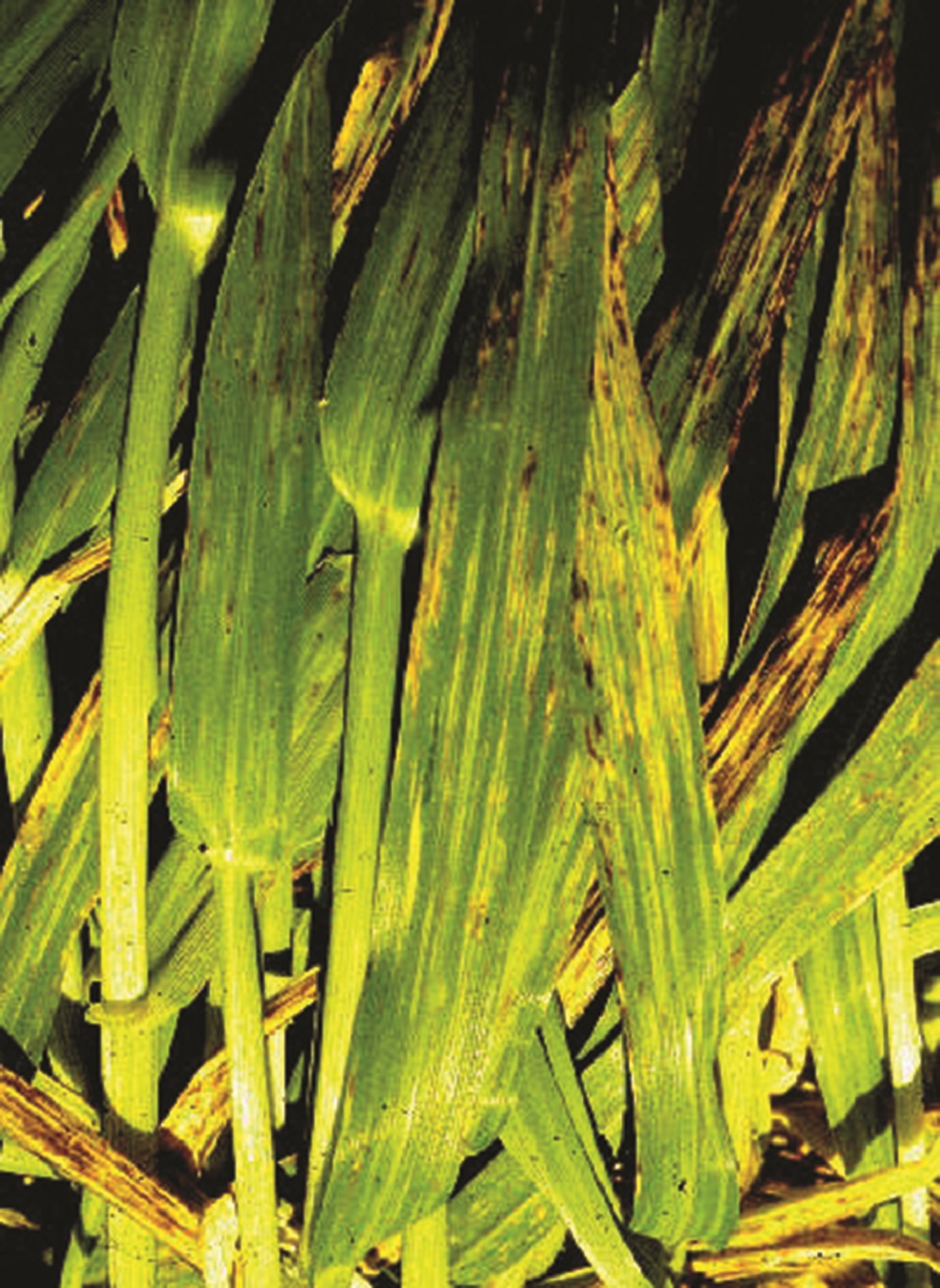- Home
- Knowledge library
- Prevention and control of cereal mosaic viruses
Prevention and control of cereal mosaic viruses
Once a crop is infected with a cereal mosaic virus, control is not possible. Therefore, methods to prevent transmission and limit spread in wheat, barley, oats, rye and triticale are essential.
Cereal disease management homepage
What are the cereal mosaic viruses?
There are several cereal mosaic viruses. Each one has a specific cereal host, as indicated by the virus name (*note: SBCMV only affects wheat). These viruses do not cross-infect to other cereals.
- Barley Yellow Mosaic Virus (BaYMV)
- Barley Mild Mosaic Virus (BaMMV)
- Oat Mosaic Virus (OMV)
- Oat Golden Stripe Virus (OGSV)
- Soilborne Wheat Mosaic Virus (SBWMV)
- Soilborne Cereal Mosaic Virus (SBCMV)*
*SBCMV only affects wheat.
Cereal mosaic viruses: crop symptoms
These viruses affect winter-sown but not spring-sown cereals.
Stunted plants with pale yellow streaks in the leaves, particularly seen during the early spring, following a prolonged cold spell. The yellow streaks may become brown or purple at the leaf tip and dark brown flecking may replace the yellow streaking. Infections usually occur in distinct patches that increase in size in successive years.
How do cereal mosaic viruses affect yield?
Yield losses of 50% have been recorded in the patches on susceptible varieties. BaYMV and BaMMV are very common in the UK. SBWMV and SBCMV are present in the UK but are not yet commonly found. OMV is commonly found, and OGSV is usually found in association with OMV. As patches are quite visible, it is easy to overestimate affected areas. However, overall yield can be reduced substantially as patches spread in successive crops.
Life cycle of cereal mosaic viruses
These viruses are closely related and all belong to the genus Furovirus or Bymovirus. They are all single-stranded ribonucleic acid (RNA) rod or filamentous viruses. The soilborne parasitic vector Polymyxa graminis infects crop roots and transmits these viruses. The virus survives within the spores of the vector and can persist in the soil, even in the absence of cereal crops, for many (more than 25) years.
 AHDB
AHDB
High-risk factors
- Previous infection (virus can persist for up to 25 years)
- Movement of infected soil, especially by cultivations and machinery movement
- Susceptible variety
Management
Once a plant is infected, control is not possible. Therefore, methods to limit spread and prevent transmission are essential. Cleaning cultivation equipment between fields reduces the risk of the virus spreading. Some winter barley varieties are resistant to BaYMV and BaMMV (see the AHDB Recommended List).




 publication.PNG?v=637780262850000000)